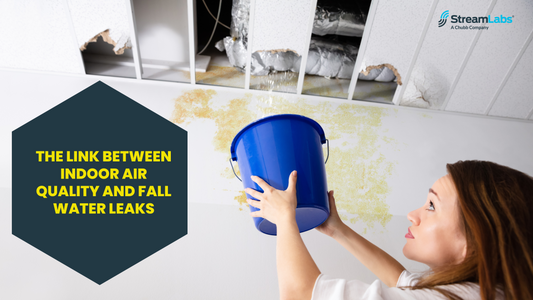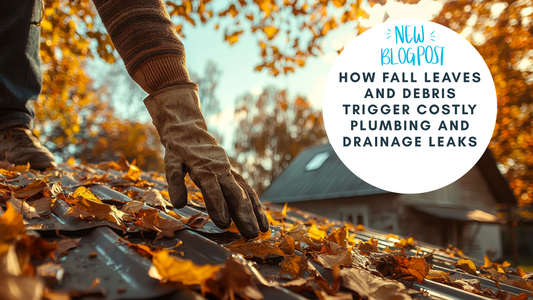Think about all the appliances in your home that use water. Dishwasher, shower, toilet, faucets, bathtubs and washing machine just to name a few. Now, let’s think again. How many of these appliances do you or your family use on a daily basis? Pretty much all of them. It’s no wonder then that the average American family uses more than 300 gallons of water every day, according to the Environmental Protection Agency.
Discover which appliances use the most water and learn tips for reducing water consumption at home.

Toilet: 33 Gallons Per Day
The toilet is a bit of a water hog. Flushing the toilet accounts for nearly a quarter of the water used in homes every day. About 33 gallons per household per day (gphd) literally goes down the toilet. That doesn't mean you have to worry about how many times a day you're using the restroom. There are small and sensible changes you can make to decrease water consumption with every flush.
-
Get a low-flow toilet. Current government standards require a new toilet use only 1.6 gallons per flush. But, if you’re in an older home, your toilet could be using up to 6 gallons. So making the switch to a low-flow toilet can reduce water usage 20-60% by taking that 1.6-gallon flush to 1.28 or less.
-
Save the flushing for what needs to be flushed. It’s not uncommon for people to put tissues in the toilet or other bathroom waste in the toilet. Keep it simple – put trash in the trash can.
- Flush less frequently. We’ve all heard the saying, “If it’s yellow, let it mellow.” We get that this may not be everybody’s cup of tea, but we can all agree it’s certainly an easy way to save water.
Shower: 28 Gallons Per Day
Whether you like to shower at night before bed or start your day with a shower, you’re probably using a lot of water. Here are a few ideas for making your shower rituals less of a water thief.
- Take shorter showers. The shower may be the place where you like to rock out and practice your audition for a singing competition, but try to keep it under 5 minutes. Set a timer or bring a radio into the bathroom to keep track of time.
- Install a low-flow showerhead. Conventional showerheads use approximately 4 gallons of water every minute. Installing a low-flow showerhead may be an up-front investment, but you’ll save money by using less than half the amount of water.
Faucet: 26 Gallons Per Day
You likely use your faucet for all sorts of things: brushing your teeth, washing your hands and cleaning your dishes. Together, these tasks make your faucets one of the biggest culprits of water consumption. These tips can help you make the most out of your faucets without using a ton of water.
- Check for leaks and drips. That “drip drip drip” you hear from your faucet might not seem like a big deal, but you can lose up to 20 gallons of water a day from just one leaky faucet. Keep an eye out for leaks — or better yet, let us do the work for you. Install a StreamLabs water monitor to know if you have leaks in your home.
- Turn off the water. When you’re brushing your teeth or lathering your hands, turn off the water. It’s that easy!
Washing Machine: 23 Gallons Per Day
The laundry room is another place in your home that uses a significant amount of water. Luckily, there are easy ways to save water that may even save you from the pain of laundry day.
- Run only full loads. Wait to run your washing machine until it’s completely full. This will maximize how many clothes you clean in one cycle.
- Re-wear or reuse items. Before tossing jeans, towels and other clothing into the dirty clothes hamper, evaluate whether or not they’re really dirty. Waiting to wash your jeans will actually extend the life of them, as each wash wears down the fabric. But not all clothes are best re-used. Just use good judgment here.
- Use the correct wash cycle and cold water. Many newer washing machines have load-sensing technology and will do this heavy lifting for you, but if you don’t have one, be sure to double-check the load size and choose the most appropriate wash cycle. Also, using cold water uses less energy — and less water — than warm or hot water.
Leaks: 17 Gallons Per Day
You may be thinking, “Leaks? That’s not an appliance!” And you’re right — it’s not. But leaky appliances are one of the biggest consumers of water in your home. In this case, we’re not talking about water up to your ankles. We’re talking about leaky faucets, toilets and water heaters — all of which you may not even realize are leaking.
The most common appliance leaks occur from:
- Refrigerator ice makers’ water supply lines.
- Washing machines’ hose connections.
- Damaged pipes or loose fittings connected to water heaters.
- Water connections to air conditioning systems.
What’s the problem with a little extra water? In addition to increasing your water bill, a leaky appliance can cause mold growth, damage to your floors and ceilings, and even structural damage to your home if the leak is left undetected long enough.
Fortunately, leak detection is our bread and butter. Our smart home water monitor attaches directly to your main water line so it can detect leaks in real time. Then the StreamLabs mobile app tells you if you’re using more water than normal so you can save water and money.
You don’t have to worry about leaks occurring while you’re away from home either. The StreamLabs Control real-time leak detection and remote shut-off functionality allow you to turn off your home’s water supply even if you’re at work or on vacation.
Water consumption is a serious business, and most of your appliances are heavy hitters. But with these quick tips — and a StreamLabs leak detection device — you’ll put a stop to wasteful water usage in no time.





